Archivo de noticias y eventos
1351 - 1400 de un total de 2402
También puede acceder a la lista de noticias publicadas en los medios relacionadas con el Instituto de Astrofísica de Andalucía - CSIC.
Pages

|
18/04/2013 - 14:30
The Shortest-Known–Period Star Orbiting Our Galaxy’s Supermassive Black Hole Stars with short orbital periods at the centre of our Galaxy offer a powerful and unique probe of the nearest supermassive black hole. Observing these stars is a long-term astrophysical experiment that has been going on for two decades. In this talk I will outline this project and discuss the observational challenges and the strategies to overcome them. Steady technological and methodological advances allow us to improve... Dr. Rainer Schoedel |

|
17/04/2013 - 15:00
A strong recollimation shock far from the core of the radiogalaxy 3C120 Which could be the mechanism for the production of moving and stationary components in AGN jets? How is it possible that a stationary component appears to be composed by subcomponents moving at superluminal speeds? The AGNs are a special class of galaxies that show an unusual amount of emission. The responsible of this emission is a supermassive black hole () that accretes matter from a hot rotating disk, leading to the formation of ultra... Carolina Casadio Otra |

|
11/04/2013 - 14:30
CALIFA: The spatially resolved Star Formation History of Galaxies The Calar Alto Legacy Integral Field Area (CALIFA) is an ongoing 3D spectroscopic survey of 600 nearby galaxies of all kinds. This pioneer survey is providing valuable clues on how galaxies form and evolve. Processed through spectral synthesis techniques, CALIFA datacubes allow us to, for the first time, spatially resolve the star formation history of galaxies spread across the color-magnitude diagram. The richness of this approach is already... Dr. R. González Delgado |

|
04/04/2013 - 14:30
Probing Galaxy-Scale Halos and Large-Scale Structure with Weak Gravitational Lensing The presence of dark matter in the Universe is well-established and contributes significantly to structures ranging from galaxies to superclusters. However, the details of the connection between luminous galaxies and the dark matter halos in which they reside are not particularly well-characterised. Weak gravitational lensing is the only direct probe that can measure the total mass profile associated with galaxies over a wide range of radii... Dr. Ami Choi |

|
04/04/2013
"Soles" jóvenes brillan en rayos X en la Pequeña Nube de Magallanes Observaciones con el satélite Chandra han permitido detectar , por vez primera, emisión en rayos X de estrellas jóvenes con masa similar al Sol fuera de la Vía Láctea |

|
28/03/2013 - 19:00
Los confines del Sistema Solar Hace ya dos décadas que David Jewitt y Jane Luu detectaron un pequeño, lento y débil objeto al que se bautizó como 1992 QB1. Este objeto marcó el inicio del estudio del llamado cinturón transneptuniano (o cinturón de Edgeworth-Kuiper), un conjunto de pequeños cuerpos que orbitan alrededor del Sol más allá de Neptuno. Aunque en realidad el primero de los objetos de este cinturón, Plutón, fue descubierto en 1930 por Clyde Tombaugh. En... |

|
21/03/2013 - 13:30
The Javalambre-PAU Astrophysical Survey The Javalambre-PAU Astrophysical Survey (J-PAS) is a very wide field Cosmological Survey to be carried out from the Javalambre Observatory in Spain with a purpose-built, dedicated 2.5m telescope, using a set of 54 narrow band and 5 broad band filters over a 1.3Gpix, 5deg2 FOV camera. Starting in early 2015, J-PAS will image 8500deg2 of Northern Sky and obtain 0.003(1 + z) precision photometric... Dr. N. Benitez |

|
19/03/2013 - 16:00
Martian dust (analogs) in Scattering Laboratory Laboratory in Institute of Astrophysics? Doesn´t it sound a bit strange? What can be measured there? How can it be applied in Astrophysics? During my CCD talk I would like to respond those and another questions. Firstly, I will make a breve introduction into The Scattering Laboratory called as well Cosmic Dust Laboratory ubicated in UDIT. And then I will talk you about the subject I work on- The Scattering on Martian Dust Analogs. Dust... Dominika Dabrowska Otra |
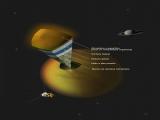
|
18/03/2013
Se detecta un gas misterioso en la atmósfera de Titán Titán es el único satélite que presenta una atmósfera densa y el único objeto, a excepción de la Tierra, donde se ha confirmado la existencia de material líquido en superficie. El análisis de los datos de Cassini-VIMS desvela la existencia de un gas no identificado en su atmósfera con anterioridad |

|
14/03/2013 - 13:30
Towards a general classification of atmospheric waves on Venus The atmospheric superrotation of Venus goes on being a puzzling phenomenon in the Solar system and is still considered an open problem in geophysicalfluid dynamics. A general agreement exists among numerous works concerning the main role that atmospheric waves should have in the generation and maintenance of the superrotation, although most of them try to study the impact of the waves with complex GCMs or using adapted terrestrial dispersion... Dr. Javier Peralta Calvillo |

|
06/03/2013 - 13:30
Hot Intergalactic Gas in Clusters of Galaxies Clusters of galaxies are the most massive objects in our Universe. Each of them contains dark matter, thousands of galaxies and is filled with hot intergalactic gas radiating in X-rays. Unusual method to detect clusters of galaxies is possible due to presence of extremely isotropic Cosmic Microwave Background Radiation (CMB) filling our Universe. Interaction of hot electrons with CMB photons changes the CMB spectrum in the... Prof. Rashid Sunyaev |

|
27/02/2013 - 16:00
¿Por qué estos !!! de GRBs me interrumpen las observaciones? ¿Quién no ha estado tranquilo y feliz en un observatorio y de repente alguien llama por teléfono solicitando una observación urgente de una contrapartida óptica de un GRB? Correcto, a mí me pasó en unas prácticas de la universidad... y no por ello les odié... más bien atrajeron mi curiosidad y... finalmente, a mi. En esta charla daré una pequeña introducción a las características observacionales de los GRBs y sus afterglows, así como de sus... Rubén Sánchez Otra |

|
27/02/2013 - 13:30
Mysteries and Discoveries from the Chandra Planetary Nebulae Suvery (ChanPlaNS) Chandra observations of planetary nebulae (PNe) have ushered in a new wave of discoveries and mysteries in this class of evolved stars. The X-ray emission from PNe comes in two flavors: compact sources in the vicinity of the central star and extended sources that fill the nebular cavities generated during the PN formation process. The latter variety, called hot bubbles, are chemically-enriched with helium shell burning products (C, O, and Ne... Dr. Rodolfo Montez |

|
21/02/2013 - 19:00
Clima y protocolos: la que se nos venía encima. Hemos utilizado un modelo global 3D del clima y química de la atmósfera para investigar qué hubiese ocurrido si los compuestos halógenos (CFC y semejantes) no se hubieran regulado por el Protocolo de Montreal a partir del 1987. Los resultados indican una reducción drástica de la capa de ozono a escala global hacia la mitad del siglo, con un contenido total de ozono en la estratosfera inferior a 100 unidades Dobson, unas tres veces menos que el... Rolando Garcia |

|
21/02/2013 - 13:30
Local tadpole galaxies and cold-flows Extremely metal poor galaxies are primitive objects attending to their chemical evolution. For reasons not well understood, they tend to have cometary or 'tadpole' morphology, with a bright peripheral clump ('the head') on a faint tail. Tadpole galaxies are rare in the nearby universe but turn out to be very common at high redshift, where they are usually interpreted as disk galaxies in early stages of assembling. If this... Dr. Jorge Sánchez Almeida |

|
21/02/2013
Arranca la construcción de CARMENES, el insArranca la construcción de CARMENES, el instrumento que buscará planetas como el nuestrotrumento que buscará planetas como el nuestro Esta semana una comisión de expertos reunida en Granada ha aprobado el diseño final del instrumento, lo que marca el comienzo de la fase de construcción |
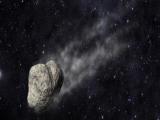
|
20/02/2013
Descubren cuándo le nació la cola al asteroide P/2012 F5 (Gibbs) Los asteroides no se caracterizan por exhibir una cola, pero se conocen excepciones. Investigadores españoles han observado uno de estos raros asteroides y han descubierto que quizá una ruptura interna o una colisión ocurrida en torno al 1 de julio de 2011 provocó la aparición del "apéndice" |

|
14/02/2013 - 13:30
Our Central Organization: Structure and Duties More than 130 research centres and institutes, the IAA among them, belong to the Spanish Research Council (CSIC). The management of the Council is carried out by the Central Organization, in Madrid. With this talk I want to give an overview of the structure of our Central Organization and of the duties of its members. Matilde Fernández Hernández |

|
07/02/2013 - 13:30
Bajo un mismo cielo "Bajo un mismo cielo” (“Under the same sky”) tells the story of the trip undertaken in 2009 by GalileoMobile. In a road trip that lasted two months and traveled around seven thousand kilometers, GalileoMobile visited schools and communities in Chile, Bolivia, and Peru to perform science activities and organize astronomical observations. Through children's eyes, an encounter from different visions and... William Schoenell |

|
31/01/2013 - 19:00
La galaxia más lejana ¿Cuándo se encendieron las primeras estrellas en el Universo?, ¿cuándo se formaron las primeras galaxias?, ¿qué propiedades tenían?, ¿eran muy diferentes de las que conocemos en el Universo cercano?, ¿cómo es que no las habíamos observado antes?. En los últimos 12 meses, los cosmólogos del mundo han sido testigos del descubrimiento de las galaxias más distantes nunca antes observadas. Mediante una cuidadosa mirada al Universo más profundo, a... Alberto Molino |

|
31/01/2013 - 13:30
IAA: its Structure, Failures and Potential In this talk I will first show the structure of our Institute, the task division and the people responsible for these taks. I will also analyse all the procedures, customs and usages that drift us apart from the dream IAA. Finally, I will make some remarks about the (underestimated? disregarded?) potential of our Institute. Matilde Fernández Hernández |
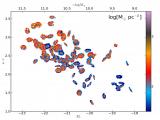
|
31/01/2013
CALIFA, un sondeo pionero en el mapeo galáctico, desvela la evolución de las galaxias en el espacio y en el tiempo Por primera vez se obtiene la historia completa de la formación estelar en cada una de las distintas regiones de un total de cien galaxias. Los investigadores han hallado que las galaxias masivas crecieron más rápido que las menores, y que además sus regiones centrales se desarrollaron mucho antes |

|
24/01/2013 - 13:30
Magnetic Effects and ovsersized M Dwarfs in the Young Open Cluster NGC 2516 By combining rotation periods with spectroscopic determinations of projected rotation velocity, Jackson, Jeffries & Maxted (2009) have found that the mean radii for low-mass M-dwarfs in the young, open cluster NGC 2516 are larger than model predictions at a given absolute I magnitude or I - K color and also larger than measured radii of magnetically inactive M-dwarfs. The relative radius difference is correlated with magnitude, increasing... James MacDonald |
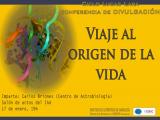
|
17/01/2013 - 19:00
Viaje al origen de la vida Nuestro planeta es, por lo que sabemos hasta la fecha, el único lugar del cosmos donde existen seres vivos. El estudio del origen y la evolución temprana de la vida es un campo de investigación interdisciplinar muy activo, que está logrando responder a algunas de las muchas incógnitas planteadas desde hace un siglo y medio, cuando Charles R. Darwin sugirió que toda la biodiversidad observada era el resultado de la evolución a través del tiempo a... Carlos Briones Llorente |

|
17/01/2013 - 13:30
Results from a stellar occultation by the dwarf planet Makemake Pluto and Eris are icy dwarf planets with nearly identical accurately measured sizes, comparable densities, and similar surface compositions. Their different albedos and current distances from the Sun are likely reasons why Pluto possesses an atmosphere whereas Eris does not. Makemake, another icy dwarf planet with a similar spectrum to Eris and Pluto is currently at intermediate distance to the Sun between the two. Makemake’s size and... José Luis Ortiz |
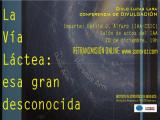
|
20/12/2012 - 19:00
La Vía Láctea: esa gran desconocida. El estudio de la Vía Láctea siempre ha supuesto un reto formidable dentro de la astrofísica. Al contrario que el resto de galaxias observables, no podemos tener una imagen completa de cómo es nuestra galaxia. Es como intentar describir como es un bosque cuando se está dentro de él. El conferenciante repasa la historia del descubrimiento de cómo es nuestra galaxia: las técnicas empleadas, las preguntas sin contestar, y el futuro, encarnado en la... Emilio Alfaro |

|
13/12/2012 - 18:00
The P91 ESO OPC Meeting - What Matters in an ESO Proposal I will give a brief summary of information obtained during my participation in the 91st meeting of the ESO Observing Programmes Committee, including the current and future availability of ESO instruments and telescopes and pending changes in ESO instrumentation. I will also briefly explain the proposal evaluation procedure and give you some tipps on how to write proposals for ESO time. Rainer Schoedel |
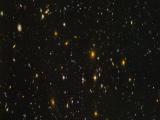
|
11/12/2012
Se esclarece la evolución química del universo a lo largo de los últimos diez mil millones de años Un estudio analiza veinte mil galaxias comprendidas en el muestreo zCOSMOS. Concluye que las galaxias más distantes tienen menor proporción de elementos pesados que las del universo local, lo que confirma el modelo jerárquico de formación de galaxias |

|
29/11/2012 - 13:30
Searches for young stars in the central region of our Galaxy Star formation processes at the Galactic Center (GC) could differ significantly from the rest of the Milky Way because of factors like the high pressure and turbulence of the ISM, strong magnetic fields, and the presence of the supermassive black hole (SMBH). Understanding star formation in this region is interesting not only in it own right, but also as a template for other galactic nuclei. Here I present results of three different... Shogo Nishiyama |

|
28/11/2012 - 16:00
What is going on in comets?! Os hablaré del apasionante mundo de la investigación cometaria. ¿Qué son?,¿de dónde vienen?, ¿son realmente peligrosos?, ¿Por qué estudiarlos?, ¿qué información pueden aportar?, ¿qué hace nuestro grupo y por qué? Fran Pozuelos Otra Sala de reuniones NE |
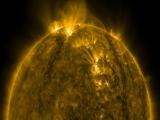
|
28/11/2012
Los planetas podrían influir en la actividad magnética del Sol Los planetas podrían perturbar el mecanismo responsable de generar el campo magnético solar en una zona clave del interior de la estrella. Se explicarían así otras periodicidades detectadas en la actividad magnética solar |
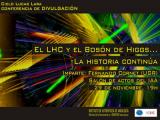
|
25/11/2012 - 19:00
El LHC y el bosón de Higgs: la historia continúa. Sin duda uno de los acontecimientos fundamentales en la historia de la física moderna: el descubrimiento del bosón de Higgs. Pero ni el LHC ni la investigación sobre el campo de Higgs terminan ni mucho menos aquí. Fernando Cornet |
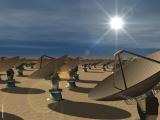
|
22/11/2012
La ciencia y la industria españolas convergen en el Square Kilometre Array, la mayor infraestructura de investigación jamás desarrollada El Square Kilometre Array (SKA) es un conjunto de radiotelescopios que constará de tres mil antenas distribuidas en un área de tres mil kilómetros de diámetro. Mañana se celebra una reunión en la que se analizarán las oportunidades para la industria española dentro de este ambicioso proyecto |
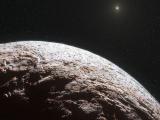
|
21/11/2012
Una ocultación estelar desvela las propiedades de Makemake, el planeta enano menos conocido La ocultación ha permitido determinar con precisión el tamaño, forma y la fracción de luz reflejada de Makemake y ha desvelado que, a diferencia de Plutón, carece de atmósfera |

|
15/11/2012
Abell 30: la nebulosa planetaria que renació y volvió a brillar en rayos X Hace ochocientos cincuenta años, Abell 30 sufrió un estallido termonuclear tardío que generó una nueva nebulosa planetaria |
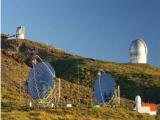
|
15/11/2012
Los telescopios gamma gemelos contraatacan Los dos telescopios MAGIC han sido renovados y reinician las observaciones del cielo gamma |

|
31/10/2012 - 16:00
Properties and evolution of internetwork magnetic fields inside supergranular cells To understand the formation of small-scale magnetic fields in the quiet Sun and their contribution to the solar activity, it is essential to investigate the properties and evolution of internetwork magnetic fields. Using Hinode/NFI line-of-sight magnetograms of very high sensitivity (6 Mx/cm^{2}), spatial resolution (0.16 arcsec/pixel), and cadence (90 s), we follow the evolution of magnetic elements inside of a supergranular cell located at... Milan Gosic Sala de Reuniones del Nuevo Edificio (IAA-CSIC) |
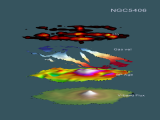
|
31/10/2012
CALIFA: el universo extragaláctico local al descubierto El sondeo CALIFA (Calar Alto Legacy Integral Field Area) anuncia hoy su primera emisión pública de datos, en la que se ofrece una visión con un detalle sin precedentes de cien galaxias del universo local. |

|
26/10/2012 - 14:00
QSO outflows The study of AGN feedback processes on the evolution of their host galaxies and their environments is a field of growing importance in the past years. One of the feedback mechanisms identified is high-velocity outflows in QSOs. In this talk, some results are presented based on observations of several QSOs, aimed to determine the importance of these outflows as feedback mechanisms. J.Ignacio González Serrano |
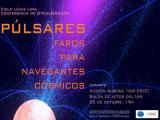
|
25/10/2012 - 19:00
Púlsares: faros para navegantes cósmicos Comienza la nueva temporada del ciclo de conferencias 'Lucas Lara' con una charla dedicada a uno de los objetos más fascinantes del Universo: los púlsares. Estrellas de neutrones de una densidad inimaginable, campos magnéticos extraordinarios, velocidades de rotación únicas, y la mejor prueba de la validez de la Relatividad General de Einstein. Antxon Alberdi |

|
18/10/2012 - 14:30
Cosmological Challenges of Dwarf Galaxies A prime challenge to our understanding of galaxy formation concerns the scarcity of dwarf galaxies compared with the numerous low-mass halos expected in the current ΛCDM paradigm. This is usually accounted for by assuming that energetic feedback from evolving stars confines dwarf galaxy formation to relatively massive halos spanning a narrow mass range. I will highlight a number of observations that may be used to test this assumption... Julio Navarro |
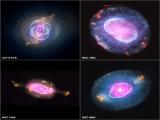
|
16/10/2012
A la caza de nebulosas planetarias en la vecindad solar Los mecanismos físicos responsables de la enorme cantidad de formas que adoptan las nebulosas planetarias es aún objeto de debate |
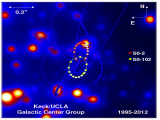
|
05/10/2012
Hallada la estrella más cercana al agujero negro central de la Vía Láctea La estrella S0-102 gira en torno al agujero negro central de la Vía Láctea en 11,5 años. Permitirá conocer cómo funciona la fuerza de gravedad en entornos extremos y profundizar en el conocimiento de los agujeros negros supermasivos en los núcleos de galaxias |

|
04/10/2012 - 14:30
Hydrodynamical Models of Core-Collapse Supernovae A set of hydrodynamical models applied to stellar evolutionary progenitors is used to study the nature of core-collapse supernovae (SNe). For the type IIb SN 2011dh, our modeling suggests that a large progenitor star---with R ~200 R_sol--- is needed to reproduce the early light curves. This is consistent with the suggestion that a yellow super-giant star detected at the location of the SN in deep pre-explosion images is the progenitor... Melina Bersten |

|
27/09/2012 - 14:30
ASTRONET, a comprehensive long-term planning for the development of European astronomy ASTRONET was created by a group of European funding agencies, including the Spanish ministry, in order to establish a strategic planning mechanism for all of European astronomy. It covers the whole astronomical domain, from the Sun and Solar System to the limits of the observable Universe, and from radioastronomy to gamma-rays and particles, on the ground as well as in space. ASTRONET aims to engage all astronomical communities... Jesús Gallego |

|
26/09/2012 - 15:00
Ciencia digital transparente: más allá de la automatización La ciencia que se realiza en Astronomía es ciencia digital: cada uno de los elementos y acciones que intervienen en la producción científica podría registrarse en soporte electrónico. Este hecho no impide que el resultado final de un experimento sea aún difícil de reproducir, incluso para el propio autor. La reproducibilidad es uno de los pilares del método científico. En esta charla describiré el trabajo que estamos realizando en el grupo AMIGA... José Enrique Ruiz Sala de Reuniones del Nuevo Edificio (IAA-CSIC) |
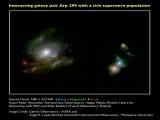
|
25/09/2012
Entre un 20% y un 80% de las supernovas pasan desapercibidas en los estudios ópticos El oscurecimiento producido por el polvo impide que se detecte una de cada cinco supernovas en las galaxias cercanas y cuatro de cada cinco en galaxias distantes. El número de supernovas detectadas ayuda a determinar la tasa de formación estelar a lo largo de la historia del universo |
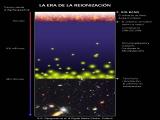
|
20/09/2012
Una galaxia formada apenas 200 millones de años después del Big Bang, visible gracias al efecto lente La galaxia MACS1149-JD data de la reionización, una etapa aún poco conocida pero fundamental para trazar la historia del universo. La detección ha sido posible gracias al efecto magnificador, similar al de una lente, de un cúmulo de galaxias situado en la trayectoria de su luz |

|
12/09/2012
La ciencia inunda las calles de Granada El Instituto de Astrofísica de Andalucía (IAA-CSIC) coordina una serie de actividades en defensa de la inversión en ciencia. Se han organizado concentraciones, un flash mob y actividades de divulgación en la calle que buscan concienciar a la población de la importancia de la investigación |

|
20/07/2012
EL PERSONAL DEL INSTITUTO DE ASTROFÍSICA DE ANDALUCÍA (IAA-CSIC) SE CONCENTRA CONTRA LA PRECARIA SITUACIÓN DE LA CIENCIA EN ESPAÑA El personal del Instituto de Astrofísica de Andalucía (IAA-CSIC) quiere manifestar su malestar y preocupación por la situación que atraviesan los centros de investigación del CSIC debido a las sucesivas restricciones presupuestarias |